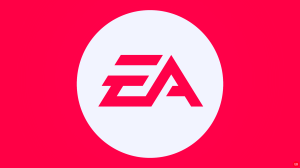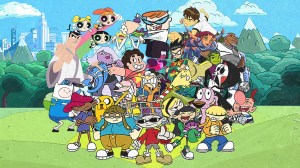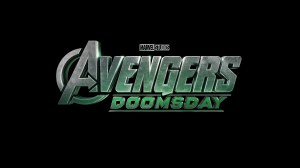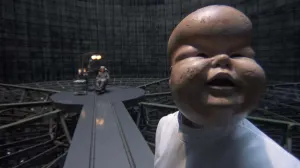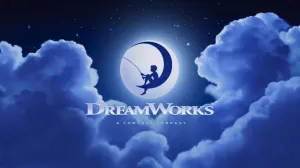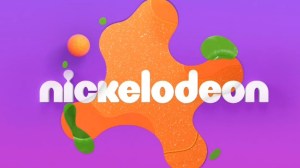The long anticapted Star Wars: Unlimited is finally here, and fans are starting to build out their dream decks and discover everything that the game has to offer. The game has quite a bit to offer too, from its collectible Foil, Hyperspace, and Showcase variants to the varying playstyles contained within its 6 Aspect system. Then there’s the Star Wars of it all, with Spark of Rebellion bringing iconic characters, locations, and moments to life that fans of the franchise will adore. So the question is if you’re new to all this, where do you start? What set do you buy, and what the heck is an Aspect? We’re here to provide the answers to all those questions and more, and hopefully provide a one-stop shop for new players to get everything they need to know to start playing and more importantly enjoying everything Star Wars: Unlimited has to offer, and you can get started on the next slide!
Videos by ComicBook.com
There’s a clear path of approachability built into Unlimited, even for someone who’s not as familiar with card games on the whole. That’s not by mistake, as during an interview with Unlimited Designer Jeremy Zwirn, he revealed that approachability was a major focus for the team, and the speed of play is something that those new to the genre and longtime TCG fans will appreciate.
“Oh, very important. That was one of the foundations we built the game upon to make sure the game was easy to learn but difficult to master because you want to make sure all players of all varieties can feel like they can play this game,” Zwirn said. “And I’ve been playing card games for 30 years, but I still love this game because there’s so much depth to it. It’s easy to learn, but I’m still having so much fun and discovering new things all the time. We wanted to appeal to a lot of players and make sure it wasn’t too overwhelming, or too complex, to make that too big of a barrier entry. So, we worked very hard on trying to get accessible to a variety of players,” Zwirn said.
You can find even more tips and strategies for jumping into Star Wars: Unlimited in our full interview with Zwirn and John Leo right here. For those who want to get a bigger overview of each element of the game and how it all works together, we’ve got you covered right here. You can find everything you need to know to get started in Star Wars: Unlimited as well as how to play and get the most out of the game on the next slide.
Are you enjoying Unlimited? Let us know in the comments, and you can also talk all things Star Wars: Unlimited with me on Threads @mattaguilarcb!
Best Way To Start Playing
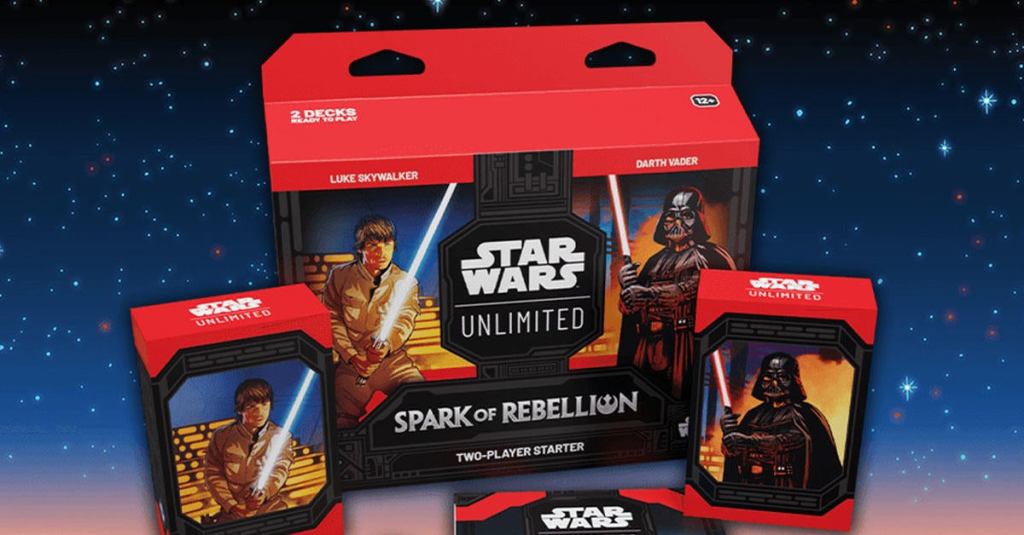
If you’re new to the realm of TCGs or just the game specifically, you might be wondering what the best way to get started is. Due to demand, individual card packs might be a bit more difficult to find, but thankfully you can readily pick up a Booster Box (a box that includes 24 packs). That said, there are two options available right now to get you started, and one of those options is the perfect choice for new players.
The Two Player Starter
The Two-Player Starter box is a one-stop shop for new players and is the perfect kit to pick up if you just want to start playing and get an idea of the various elements of moment-to-moment gameplay. The box includes two pre-built 50-card decks that are ready to go and features decks themed after Darth Vader and Luke Skywalker. You’ll also get Quickstart rules, damage counters, 2 paper playmates, and 2 folded deck boxes, so you should have everything you need to not only play but also to store it all for future games.
The other major win with this set is that both characters feel distinct from one another and feature a host of other expanded mechanics. You’ll learn about resource manipulation, shielding, XP, and more by the time you’ve had a play-through or two, and playing the other side feels immensely different since you’re utilizing a much different aspect-focused deck. Plus, these will probably be more readily available than Booster Packs at the start, so you shouldn’t be stuck waiting to play, and it also comes in at an affordable $34.99.
Spark of Rebellion Prerelease Box
There is one other easy option to get rolling right now, and that’s through Prerelease Boxes. These boxes are available right now through local game stores, though they will be running out soon as the game has now had its official launch. Still, it’s worth checking around, as for $29.99 you get 6 Booster Packs, 2 Promo Cards, Quickstart rules, damage counters, a deck-building guide, and a deck box. That’s a great value, especially including the 6 Boosters, and should help get you started or bolster a deck you’re currently trying to expand.
What Is Spark of Rebellion?
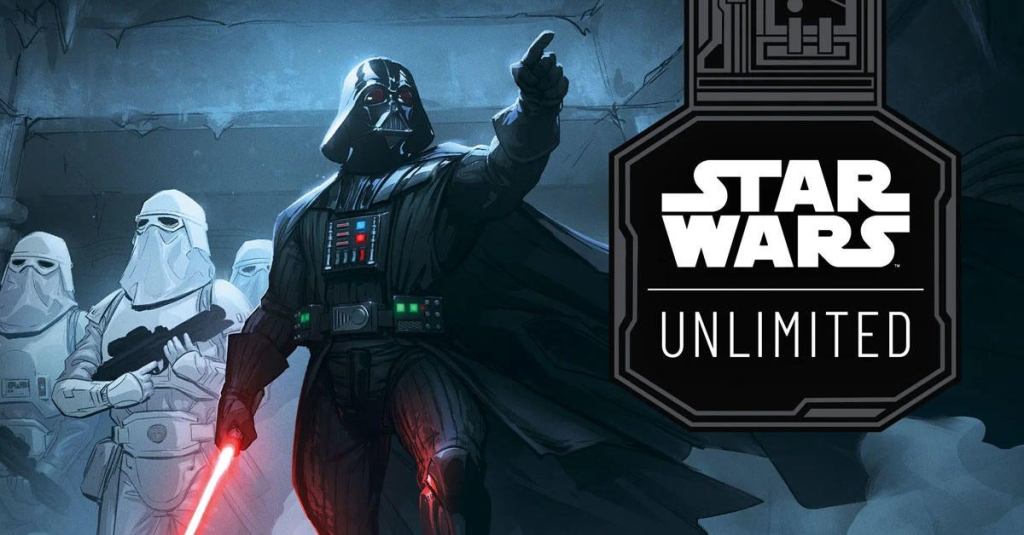
The first set for Star Wars: Unlimited is titled The Spark of Rebellion, but what does that necessarily mean? It’s really tied to the eras of the Star Wars universe that are a focus of the set, and for Spark of Rebellion, that includes characters and content from the original Star Wars trilogy (A New Hope, Empire Strikes Back, and Return of the Jedi), as well as Rogue One: A Star Wars Story and Star Wars: Rebels.
Many of the iconic characters are in the mix, including Vader, Luke, Obi-Wan, Leia, Chewbacca, Thrawn, Ezra, Sabine, Jyn, Hera, and Boba Fett, and that’s not even close to everyone that’s part of the first set.
While we don’t have many details on the next sets, we do know a few things. Set #2 is titled Shadows of the Galaxy, and Fantasy Flight has revealed that the first two leaders in that set are Din Djarin (Mando) and Moff Gideon. That set will be released in July of this year. The 3rd set is titled Twilight of the Republic and will launch in November of 2024.
Differences Between Rarities, Hyperspace, Showcase, and Foils
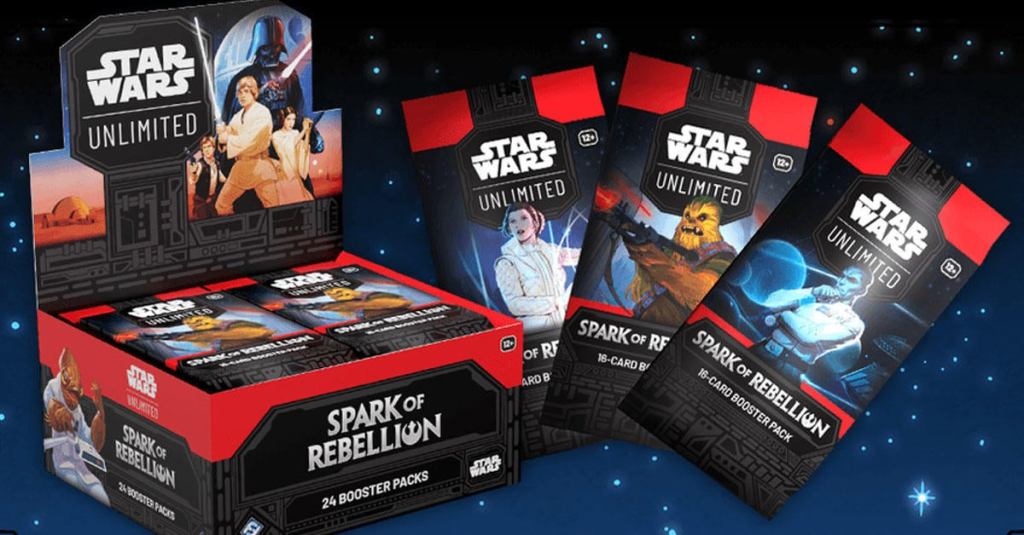
Part of the fun of collecting Star Wars: Unlimited is that every pack can result in a host of unique and gorgeous cards, and just one pack can net you several stunning new additions to your collection. That’s because there are three different types of cards that you can pull atop the four standard card rarities, and some of those additional tiers can also include multiple rarities to boot. Here’s the breakdown of each type of card and the odds of pulling one from a pack.
Card Rarities
When you open a pack of cards you’ll find cards that are split between four different rarities, including Common, Uncommon, Rare, and Legendary. Each pack features 3 Commons, 3 Uncommons, and 1 Rare or Legendary, as well as a Leader, a Base, and a Foil (which we’ll get to later). Regarding the 1 Rare or Legendary in each pack, the rarity of Legendary cards is at 1 in every 8 pack.
Foils
You’ll also get one Foil card in each pack, and it will be the final card in the pack. Obviously, the Foils are gorgeous, but what’s even better is that the Foil can be of any rarity, which means you can even end up with a second Rare or Legendary depending on what Foil you pull.
Hyperspace
Then there’s an additional type of card known as Hyperspace Variants, and these cards are some of my favorites in the game. A Hyperspace Variant is a card that removes the standard border from the card and thus shows off more of the artwork underneath, and these cards just pop even more without that border in place. You can also get Hyperspace Leaders and Bases, and there’s also the possibility of getting a Hyperspace Foil, making these cards pop even more.
The odds of pulling a Hyperspace Variant is 2 in every 3 packs, and pulling a Hyperspace Rare or Legendary is 1 in every 15 packs. A Foil Hyperspace Rare or Legendary is 1 in every 50 packs.
Showcase
The final card type is Showcase, and these are the most limited cards in the game. Showcase variants are exclusively for Leader cards, and these cards feature gorgeous alternate artworks, a unique frame, and a slick foil treatment. These are incredibly hard to find, as the odds are 1 in every 12 boxes, but they are stunning and will instantly become the gem of your collection if you manage to pull one.
What Are Leaders and Bases?
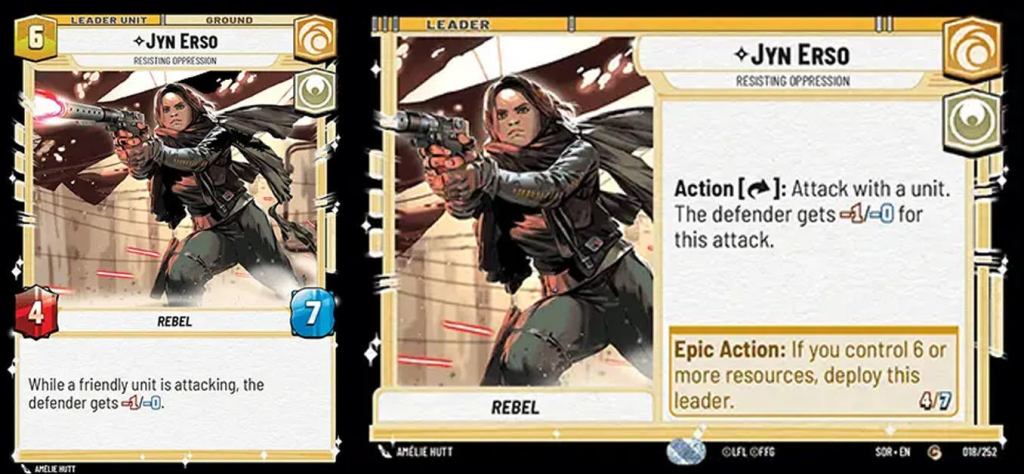
Star Wars: Unlimited features many of the iconic characters and locations from the franchise, and these are represented through two main types of cards. Those are Leaders and Bases, and both are central to how the game works and how players will take on their opponents.
Leaders
Leaders are aptly named, as these iconic characters from the franchise will dictate the aspects of your deck and as a result your chosen playstyle. We’ll get to Aspects in a bit, but regardless of which Aspect they represent, Leader cards will have two abilities at their disposal. Each Leader has a unique standard Action available to them that you can use each turn and typically requires you to exhaust them to put it into use.
Then each Leader has an Epic Action, which is able to be activated when you’ve put the required amount of resources into play. Once that’s done, you can flip the Leader card and put them directly into the field, and they will gain the unique ability on that side of the card. Once they are defeated, however, you can’t put them back into the field again, so you need to make it count.

Bases
The object of the game is to take out your opponent’s Base, and Base cards come in a variety of locations and Aspects. Most Base cards are equipped with 30 health, but there are a few Bases that come with an Epic Action the player can use, though these are only at 25 health. The main difference between Bases is in the artwork and Aspects distinction, which we’ll get to next.
What Are Aspects?
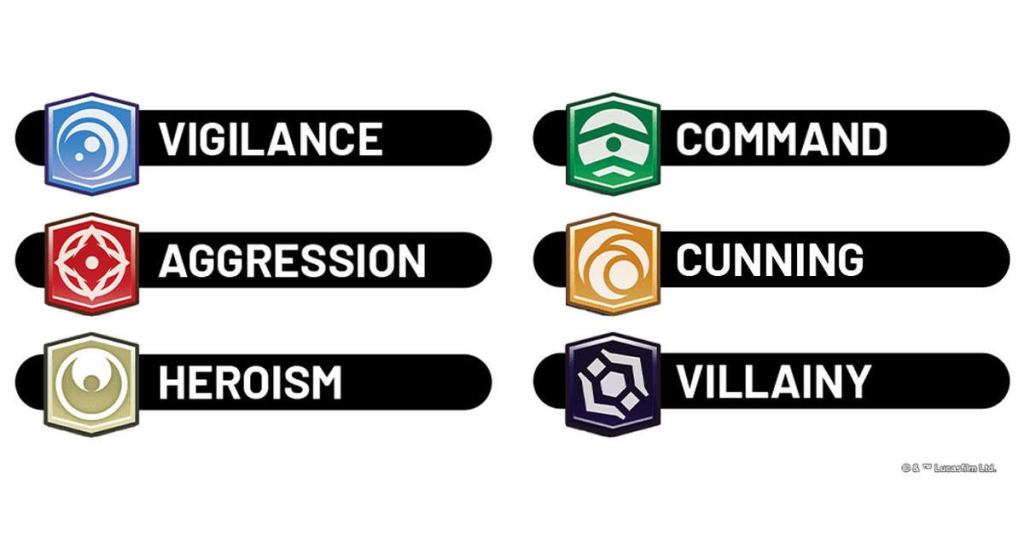
A central component to Star Wars: Unlimited is Aspects, and these will play a role in choosing your Leaders, your Bases, and the cards that make up your deck. There are six Aspects in the game (summarized above), and they include Command, Cunning, Villainy, Vigilance, Aggression, and Heroism. Your Leader will typically come with 2 Aspects and a Base comes with 1, resulting in 3 Aspects you can use without penalty in your chosen deck.
Part of what makes Unlimited so approachable at the outset is that you can use any card you have in your deck, regardless of what Aspect it contains. The catch is that you will have to pay an Aspect penalty on a given card if it doesn’t match one of the three Aspects from your Leader and Base, and that penalty is having to pay 2 extra resources to play that card. That’s perfectly fine to do if you really want to use a card, but you really maximize your deck by embracing those 3 Aspects.
Heroism and Villainy are fairly straightforward, as they typically align with heroes and villains and embrace those more traditional lines in the sand. Things start to shift more when the other 4 Aspects are brought into the mix, and since you’ll have a total of 3 in play, you have plenty of room to find a strategy that fits your particular style of play.
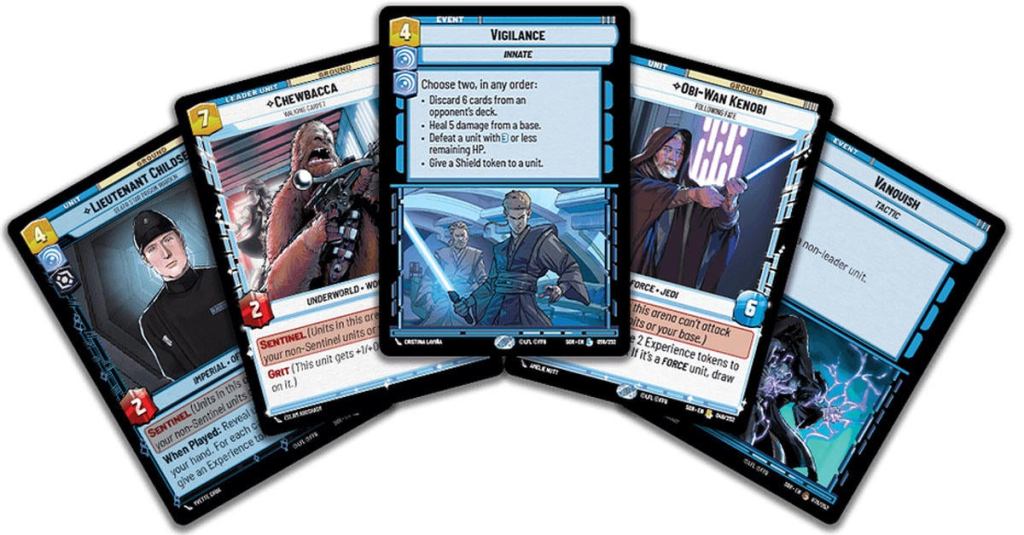
The Blue Aspect is Vigilance, which focuses on defense and control, and many cards take advantage of the Sentinel keyword. A unit with Sentinel means the enemy can’t target any other unit or your base until the effect is either removed or the Sentinel unit is knocked out. Other benefits of the Aspect include Restore, Repair, and Vanquish, just to name a few.
The Green Aspect is Command, and this Aspect focuses on resource management and playing a multitude of units on the field. There are cards that become Resources when played, while others turn into Resources when they are defeated. Then there are cards like Prepare for Takeoff, which gets you multiple Vehicles in hand, and these are bolstered by numerous Leader abilities that give those units a boost.
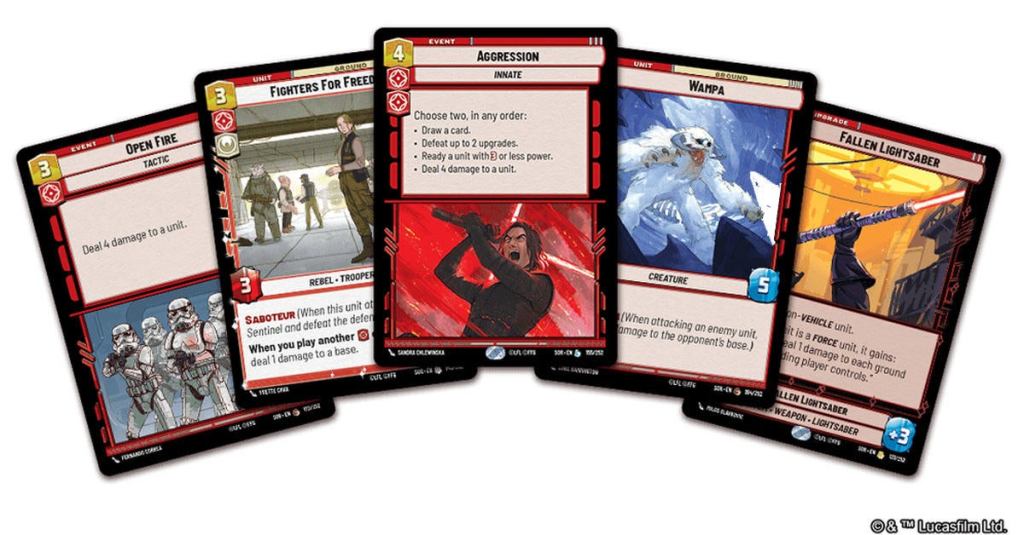
The Red Aspect is Aggression, which as its name implies, is all about dealing damage. Cards like Open Firejust straight up deal heavy damage, wearing down more well-armored foes, and Saboteur armed cards allow your units to ignore Sentinel and Shields to deal damage directly. One extremely handy ability comes from the Leader Sabine, who can damage both bases by 1 each round. While this does damage to your base as well, the constant damage to the opponent’s base adds up quickly and will have an effect on their strategy, so it very well might be worth taking a few hits yourself.
The Yellow Aspect is Cunning, and this Aspect focuses on trickery that will muck up your opponent’s plans. There’s an unpredictability to this Aspect, as cards have things like Ambush and When Played effects, which let them attack the moment they hit the field. Cunning Event cards like No Good to Me Dead can exhaust a unit and then prevent that unit from readying through the end of the round, and this can really have a huge effect if deployed in the right way. You can even make the opponent discard cards from their hand, but to do all this you will need ample resources at your disposal.
How Does Combat Work?

So last but certainly not least is, how does combat actually work? Well, thankfully it’s pretty simple, as turns move incredibly quickly between players. At the start of the game, the person with the Initiative token goes first (typically decided by calling a flip of the token). You then each draw a hand of 6 cards and choose 2 cards in that hand to place facedown as resources. Resources are how you pay to play cards in your hand and move to the field.
The Action Phase has players taking a single action and then alternating turns with their opponent. This continues until both players pass, and actions can include playing a card from your hand, attacking a unit, using an action ability, and taking the initiative token, which will then allow you to start the next round.
When both players pass, that begins the Regroup Phase, which starts by having each player draw 2 cards from the top of their deck. Then you may choose any 1 card from your hand and put it into play as a resource. It is optional, but early on you are going to want to add more resources to pay for some of the higher-cost units, events, and upgrades. The final step of this phase is to Ready all of your exhausted cards, and afterward, another round of the Action Phase begins.
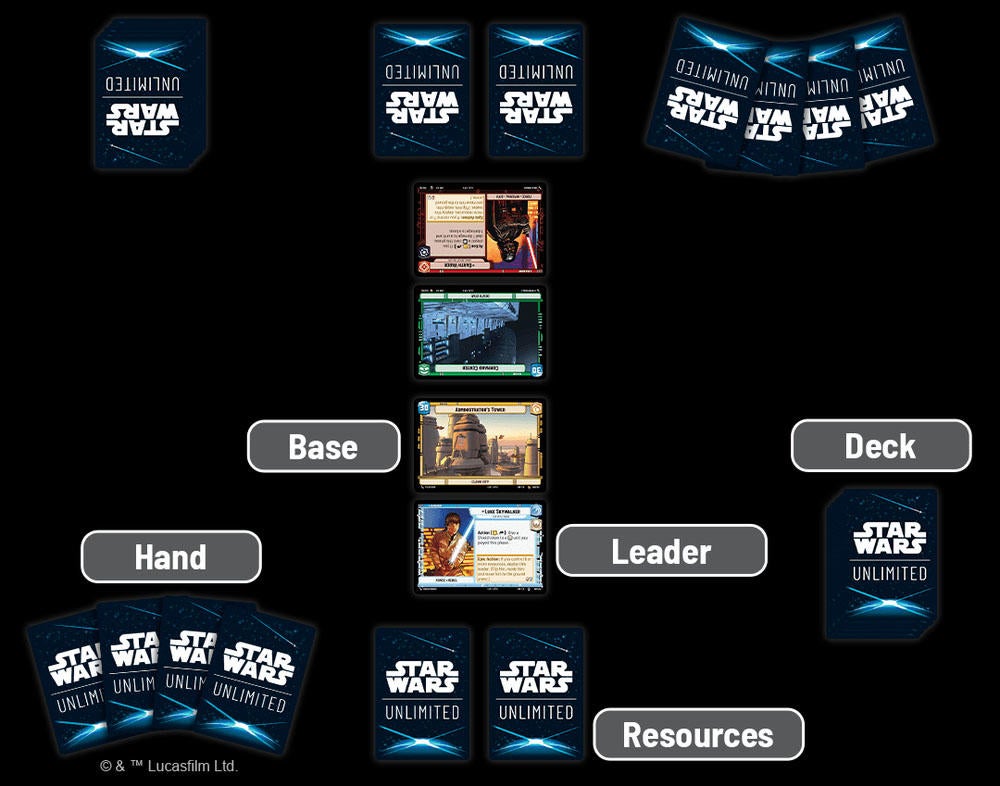
To play a card you’ll exhaust the number of resources indicated by the card’s cost, which is featured in the upper left-hand corner of the card. The battle is split between the ground arena and the space arena, and only those types of units can be played in their respective arenas (you can’t play an AT-AT in space for instance. Some units do have crossover effects, but those are unique to those units, though both sides of the battle can attack the opponent’s Base.
When attacking a Base, you simply do damage to the Base unless your opponent has some sort of card or ability that changes that in some way. When attacking another unit, the attacker and defender deal damage at the same time, which is resolved by looking at the Damage and HP on both cards. One exception is the On Attack ability, which allows a unit to trigger its attack before receiving any damage.
You continue to add resources and more cards to the field as rounds play out, and as previously mentioned, you also have your Leader’s Actions and Epic Actions to factor in throughout. and the first person to defeat the other player’s base wins.

